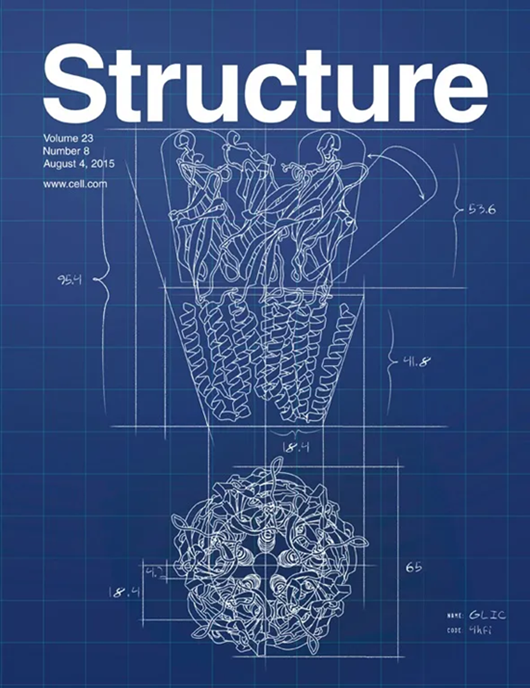人尿调蛋白丝网在尿路病原体捕获中的结构基础
IF 4.3
2区 生物学
Q2 BIOCHEMISTRY & MOLECULAR BIOLOGY
引用次数: 0
摘要
尿调素(UMOD)是人体尿液中含量最多的蛋白质,对肾脏功能和尿道健康至关重要。UMOD形成细丝结合尿路致病菌,促进其聚集和清除尿路。在这里,我们展示了UMOD细菌结合的D10C结构域的低温电镜(cryo-EM)结构,并揭示了它与丝芯的结合。d10c -核结合的细节解释了UMOD采用的独特丝晶格结构的形成。d10c核结合界面产生了多种丝晶格结构,从开放和膨胀到紧凑和致密构象,或两者的结合。我们假设尿液中存在的其他分子可能作为交联剂,进一步稳定这种结合界面,并促进单个细丝连接成能够有效捕获细菌的更大网络。肾脏疾病相关突变的结构定位指向二硫键的取消和促进突变体UMOD聚集。本文章由计算机程序翻译,如有差异,请以英文原文为准。

Structural basis of human uromodulin filament networks in uropathogen capture
Uromodulin (UMOD), the most abundant protein in human urine, is essential for kidney function and urinary tract health. UMOD forms filaments that bind to uropathogenic bacteria, facilitating their aggregation and clearance from the urinary tract. Here, we present the cryo-electron microscopy (cryo-EM) structure of the bacteria-binding D10C domain of UMOD and reveal its binding to the filament core. The details of D10C-core binding explain the formation of distinct filament lattice architectures adopted by UMOD. The D10C-core binding interface gives rise to diverse filament lattice structures, ranging from open and expansive to compact and dense conformations, or a combination of both. We hypothesize that other molecules present in urine may act as cross-linking agents, further stabilizing this binding interface and facilitating the connection of individual filaments into larger networks capable of effectively trapping bacteria. Structural mapping of kidney disease-related mutations points toward the abolition of disulfide bonds and promotion of mutant UMOD aggregation.
求助全文
通过发布文献求助,成功后即可免费获取论文全文。
去求助
来源期刊

Structure
生物-生化与分子生物学
CiteScore
8.90
自引率
1.80%
发文量
155
审稿时长
3-8 weeks
期刊介绍:
Structure aims to publish papers of exceptional interest in the field of structural biology. The journal strives to be essential reading for structural biologists, as well as biologists and biochemists that are interested in macromolecular structure and function. Structure strongly encourages the submission of manuscripts that present structural and molecular insights into biological function and mechanism. Other reports that address fundamental questions in structural biology, such as structure-based examinations of protein evolution, folding, and/or design, will also be considered. We will consider the application of any method, experimental or computational, at high or low resolution, to conduct structural investigations, as long as the method is appropriate for the biological, functional, and mechanistic question(s) being addressed. Likewise, reports describing single-molecule analysis of biological mechanisms are welcome.
In general, the editors encourage submission of experimental structural studies that are enriched by an analysis of structure-activity relationships and will not consider studies that solely report structural information unless the structure or analysis is of exceptional and broad interest. Studies reporting only homology models, de novo models, or molecular dynamics simulations are also discouraged unless the models are informed by or validated by novel experimental data; rationalization of a large body of existing experimental evidence and making testable predictions based on a model or simulation is often not considered sufficient.
 求助内容:
求助内容: 应助结果提醒方式:
应助结果提醒方式:


